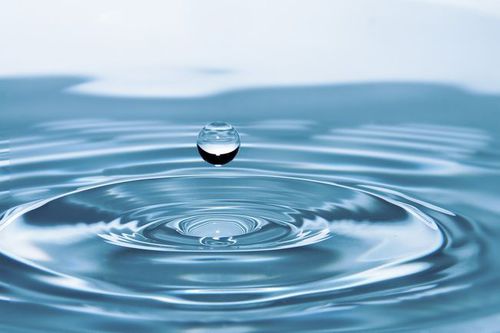August 3, 2016
Demonstration of Japan's Hydrogen Energy Project at 2020 Olympics in Tokyo to Show Future of Low-Carbon Communities
Keywords: Chemicals Climate Change Environmental Technology Renewable Energy

Image by ronymichaud.
The Japanese government is promoting technological development to emphasize the benefits of a low-carbon hydrogen society to the world, through the collaboration of relevant ministries and agencies. The Cabinet Office, which is playing the central role in the government's plan, is taking the initiative in the creation of "energy carriers" to facilitate the transport of carbon-free hydrogen, while the Ministry of Economy, Trade and Industry (METI) and Ministry of the Environment (MOE) are focusing on the production and use of hydrogen. Below we share a report about these initiatives to achieve a hydrogen-based society in Japan. This article is based on a report by Smart Japan, a media services provider specializing in energy conservation, storage, and generation, which we summarized with their permission.
Various sectors have launched technology development projects to realize a hydrogen-based society with low carbon dioxide (CO2) emissions. The biggest challenge in realizing this society is the creation of "energy carriers," such as ammonia and methylcyclohexane (MCH).
The Cabinet Office will promote the research and development of mainly ammonia fuel cells and ammonia-fueled power generation, and will also deal with hydrogen production using solar heat. It plans to demonstrate, at the 2020 Tokyo Olympic and Paralympic Games, how low-carbon communities can be created through the combination of these technologies to produce and use CO2-free hydrogen at a lower cost.
The Institute of Physical and Chemical Research, which is under the jurisdiction of the Ministry of Education, Culture, Sports, Science and Technology, is addressing two research themes. One is to create hydrogen by splitting neutral (neither acidic nor basic) water available in nature, such as rainwater and seawater. The Institute plans to develop a system that splits neutral water efficiently by using manganese oxide to induce a reaction similar to the one seen in plants, which splits water by using manganese as a catalyst.
The other theme is to develop a method to synthesize ammonia in an energy-efficient and innovative manner. Converting gaseous hydrogen into liquid ammonia requires high-temperature and high-pressure conditions, thus consuming a large amount of energy. Instead, the Institute will use nitrogen and titanium to synthesize ammonia from hydrogen at room temperature and pressure.
Regarding the production of hydrogen, METI is advancing the development of technologies to electrolyze water at a lower cost. Under the project of developing innovative technologies to store and transport hydrogen energy, which will be implemented for nine years between fiscal 2014 and 2022, it is developing technologies to produce hydrogen using alkaline water, etc.
In the use of hydrogen, METI is promoting the use of fuel cells and fuel cell vehicles to households and companies, while the MOE is engaged in a project of demonstrating forklifts and garbage trucks equipped with a fuel cell. It has already launched verification tests on fuel cell-powered forklifts and also plans to launch tests on garbage trucks in fiscal 2016.
The MOE has also conducted tests to demonstrate the operation of a fuel cell ship powered by hydrogen, which was produced from electricity generated by offshore wind power. The Ministry of Land, Infrastructure, Transport and Tourism (MLIT) plans to establish safety guidelines for fuel cell ships by fiscal 2017 to ensure measures against salt damage and impacts.
Since fiscal 2015, initiatives in producing and using CO2-free hydrogen have been expanding nationwide. For instance, in Yokohama City, Toyota Motor Corp. plans to play a leading role in producing hydrogen by using electricity generated by wind power plants. The hydrogen produced there will be carried by truck to seaside warehouses and factories to be supplied to fuel cell forklifts. Verification tests will be conducted for four years, from fiscal 2016 to 2019.
In Hokkaido, located in the northernmost part of Japan and rich in renewable energy sources, two demonstration projects are being planned. In Shikaoi Town, which has a thriving dairy industry, a plant to purify biogas derived from dairy cow manure is already in operation. The biogas generated at the plant is used to produce hydrogen, which is supplied to fuel cells installed at neighboring dairy farms, etc., to supply electricity and warm water.
The other project is to build a micro-hydroelectric power facility at a dam site in Shiranuka Town to produce hydrogen by electrolyzing water using the electricity generated. Hydrogen produced there will be transported to neighboring areas by trailer and other means, under high-pressure conditions. By promoting the local consumption of locally produced energy through the combination of renewable energy and hydrogen, the Japanese government intends to encourage the creation of low-carbon communities in the vast Hokkaido region.
Source: Smart Japan (in Japanese)
Related
"JFS Newsletter"
Related
"Popular Articles"
- New Nano-Bubble Technology May Help Dissolve Sludge and Improve Water Quality
- Japanese Firm Begins Development of Tidal Power Generation System
- Small Hydropower Generation System Developed for Use in Seawater, Weight Cut by Half
- Constructed Wetland Facility Established by Japanese University Purifies Livestock Farming Drainage
- Toyota CRDL Succeeds in World's First Artificial Photosynthesis Using only Water and CO2


